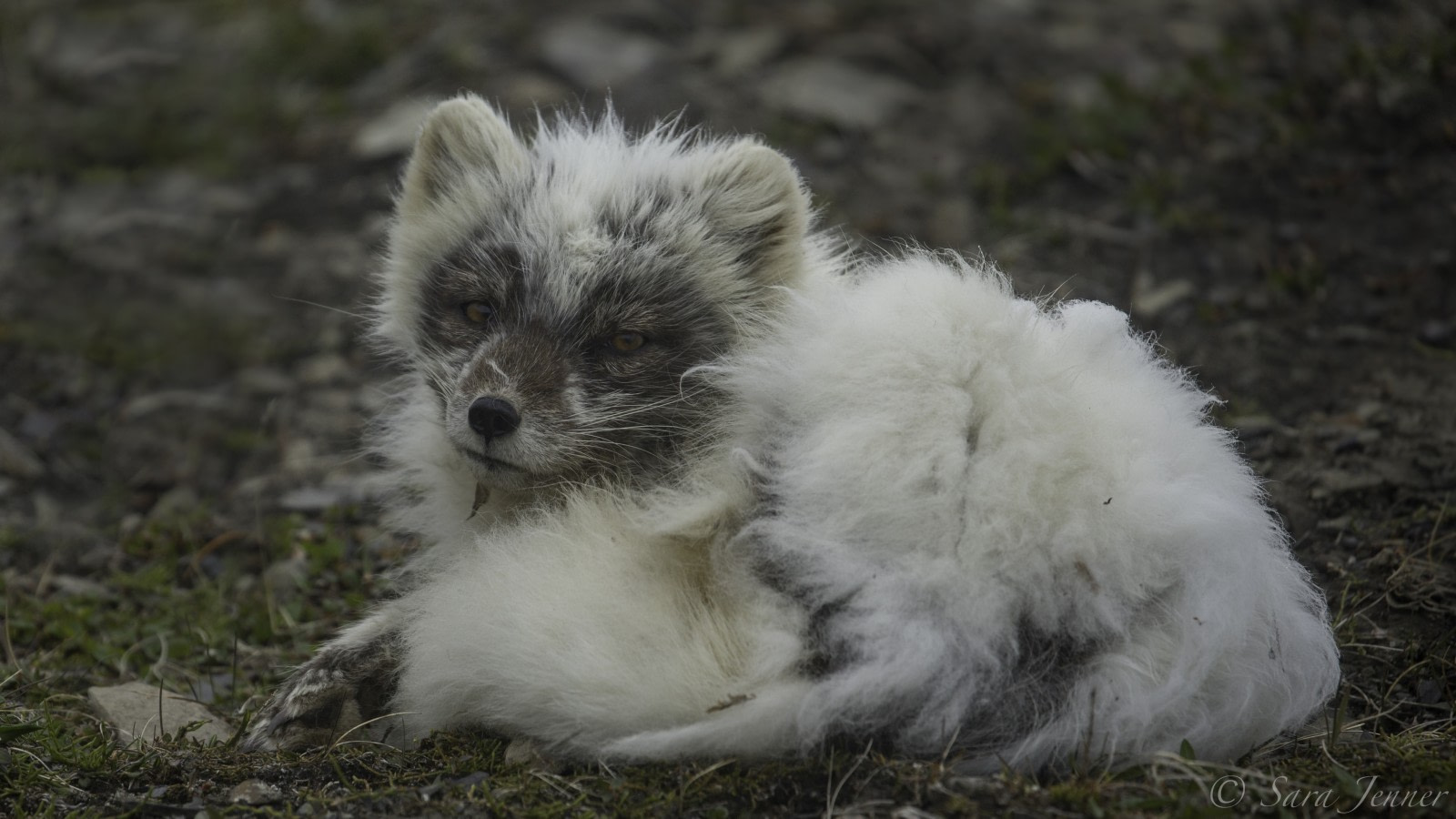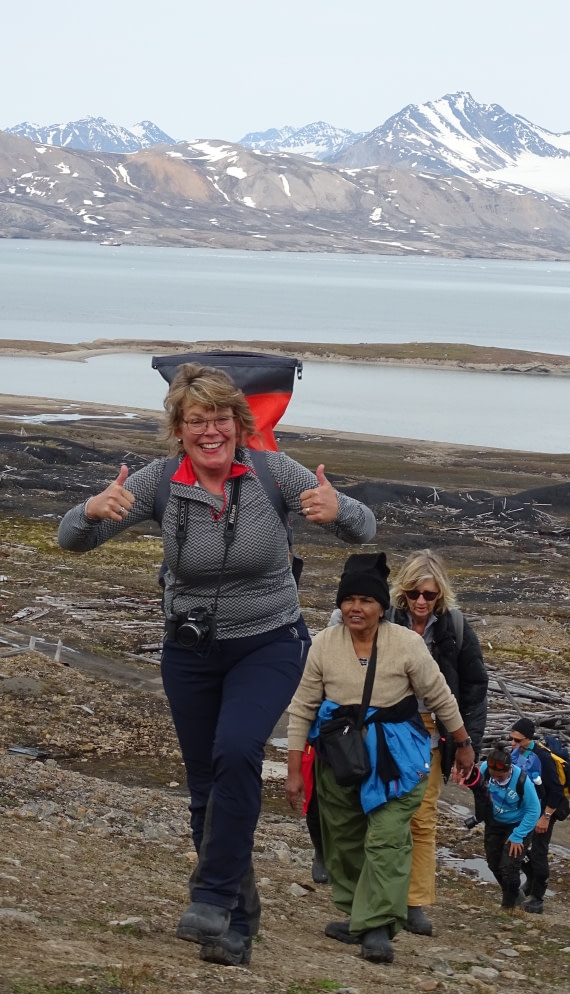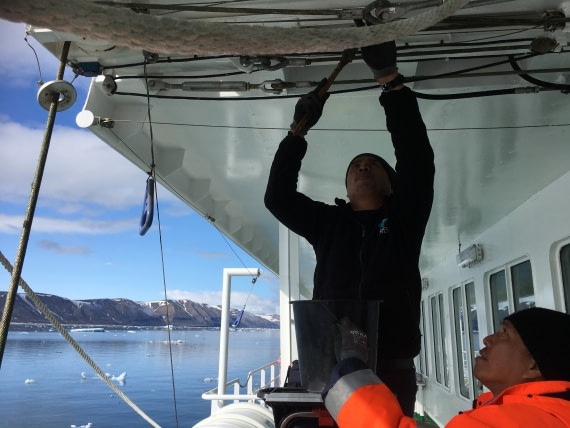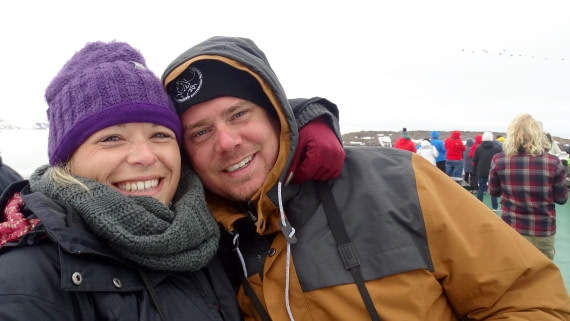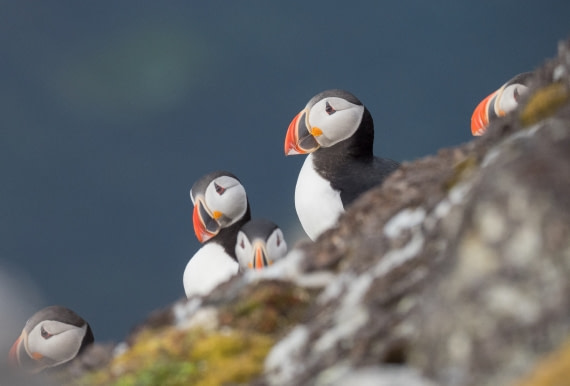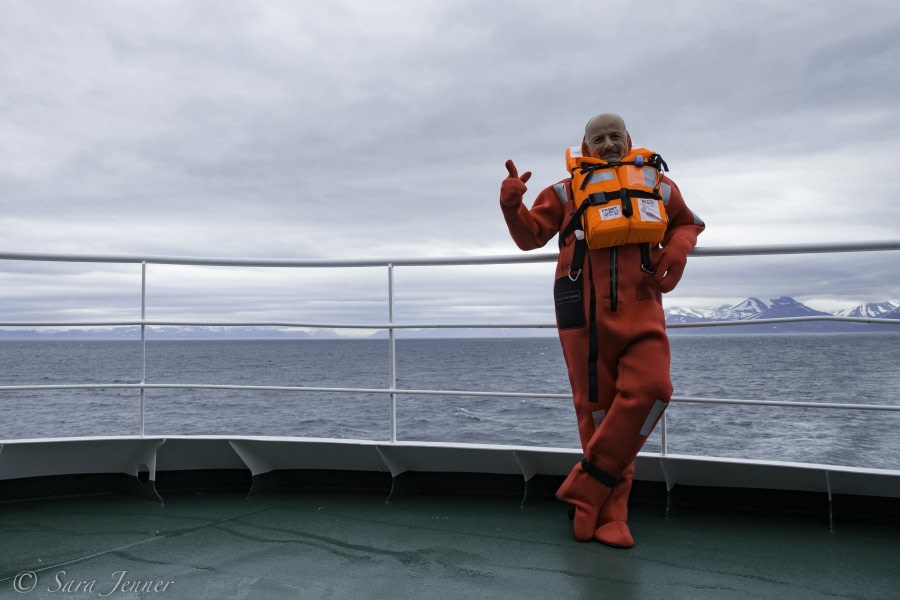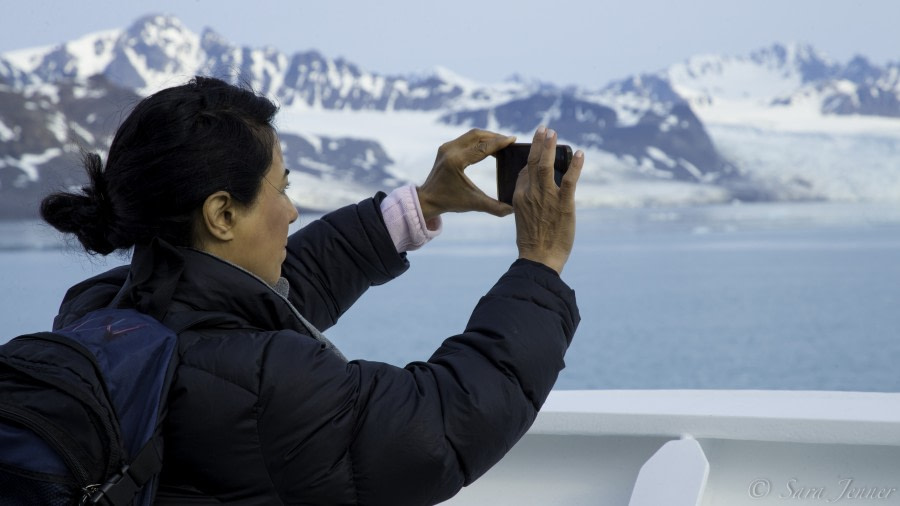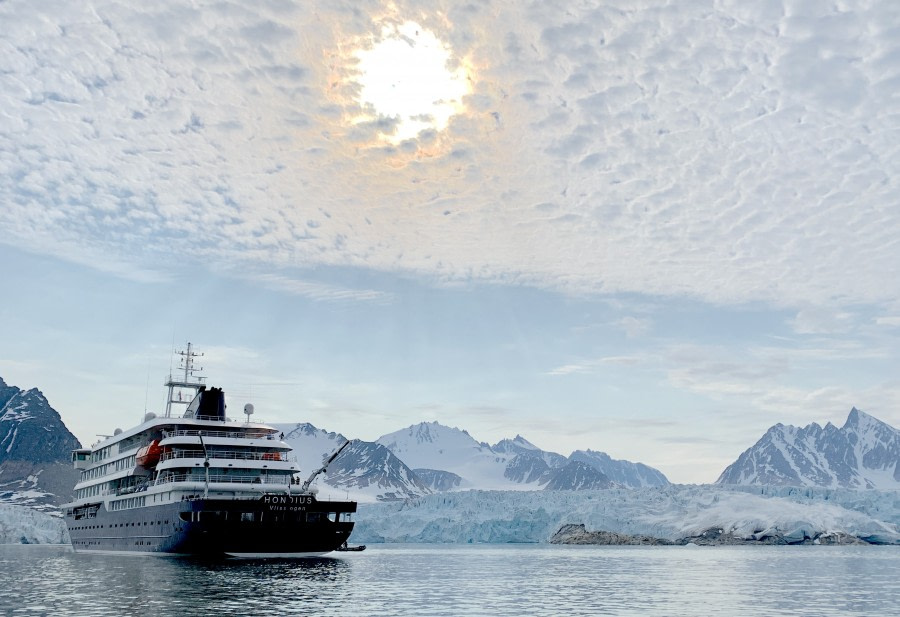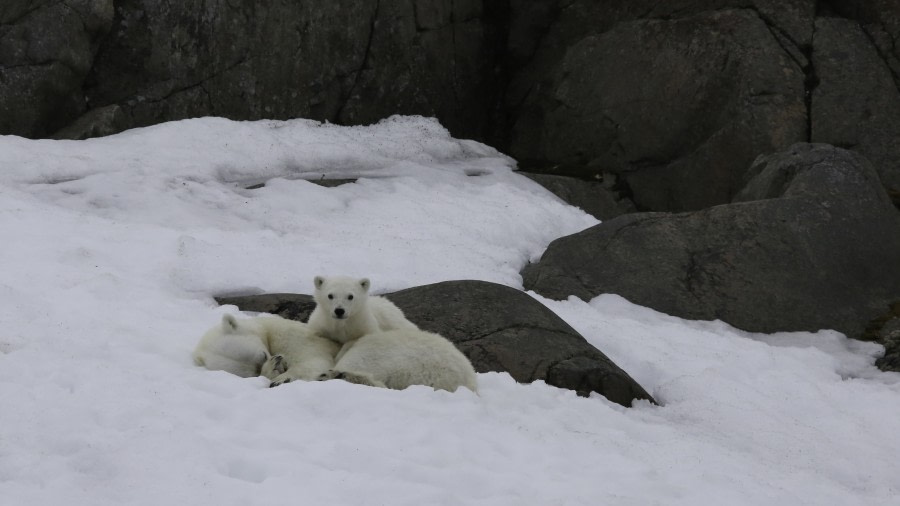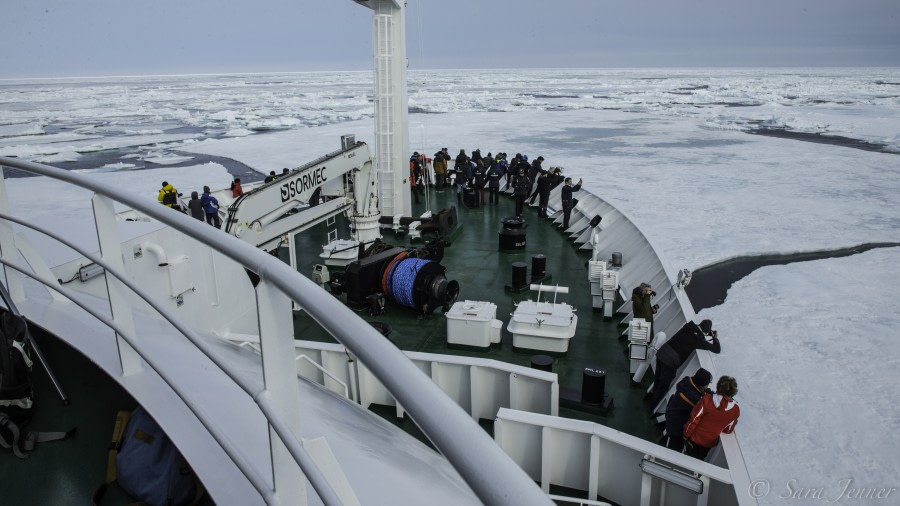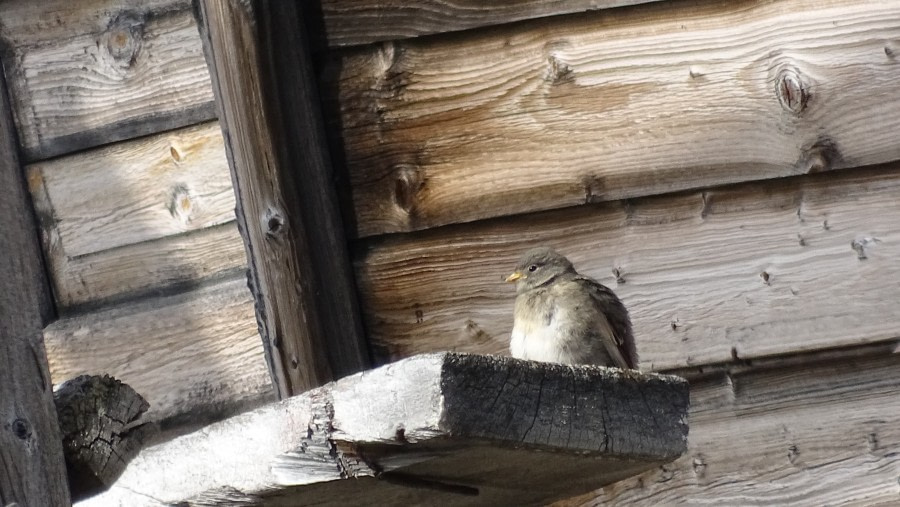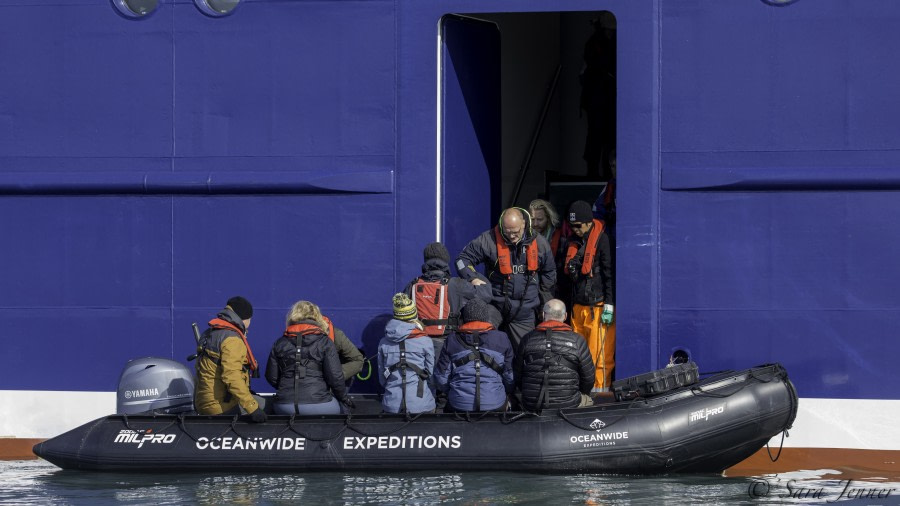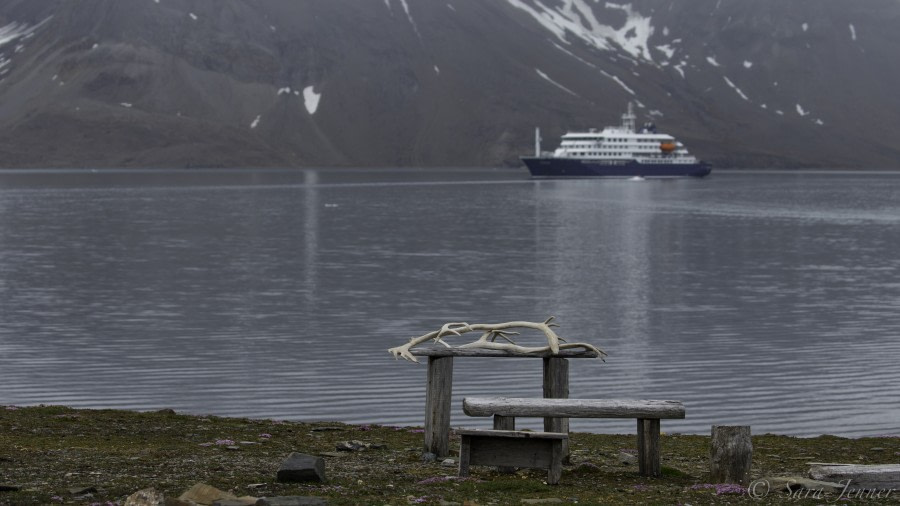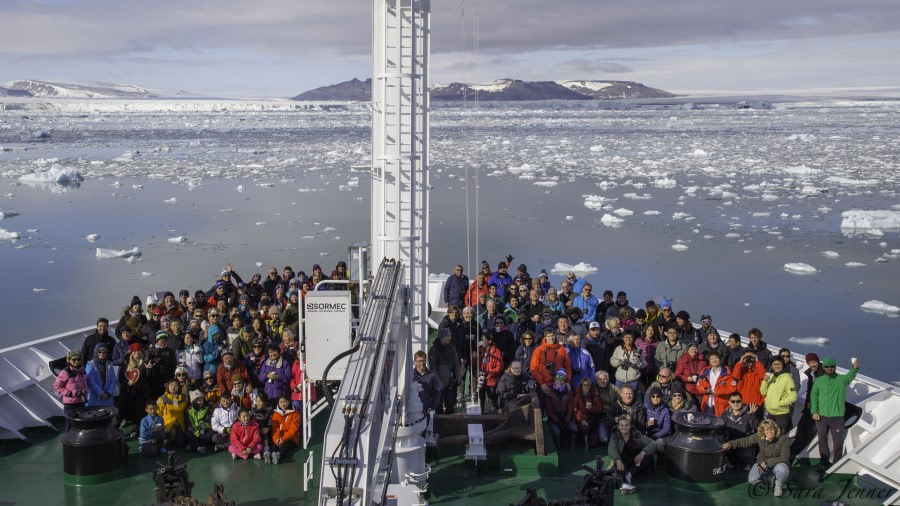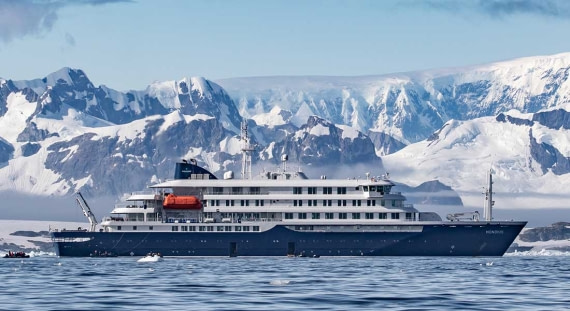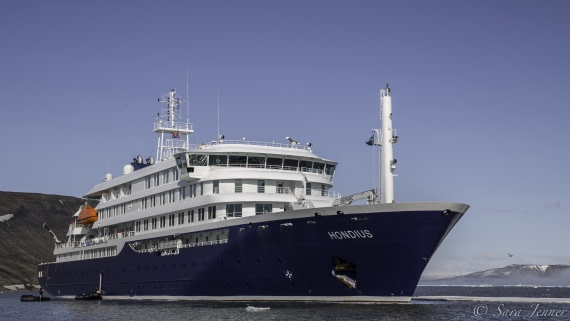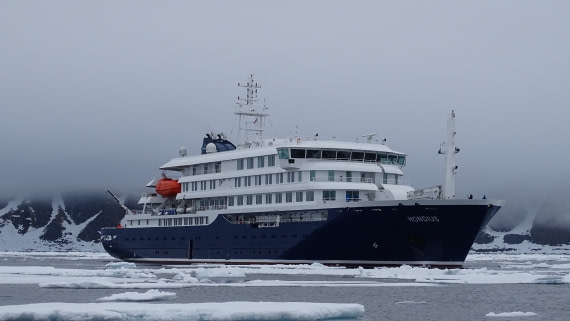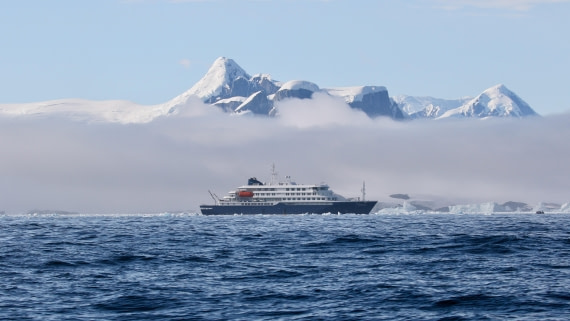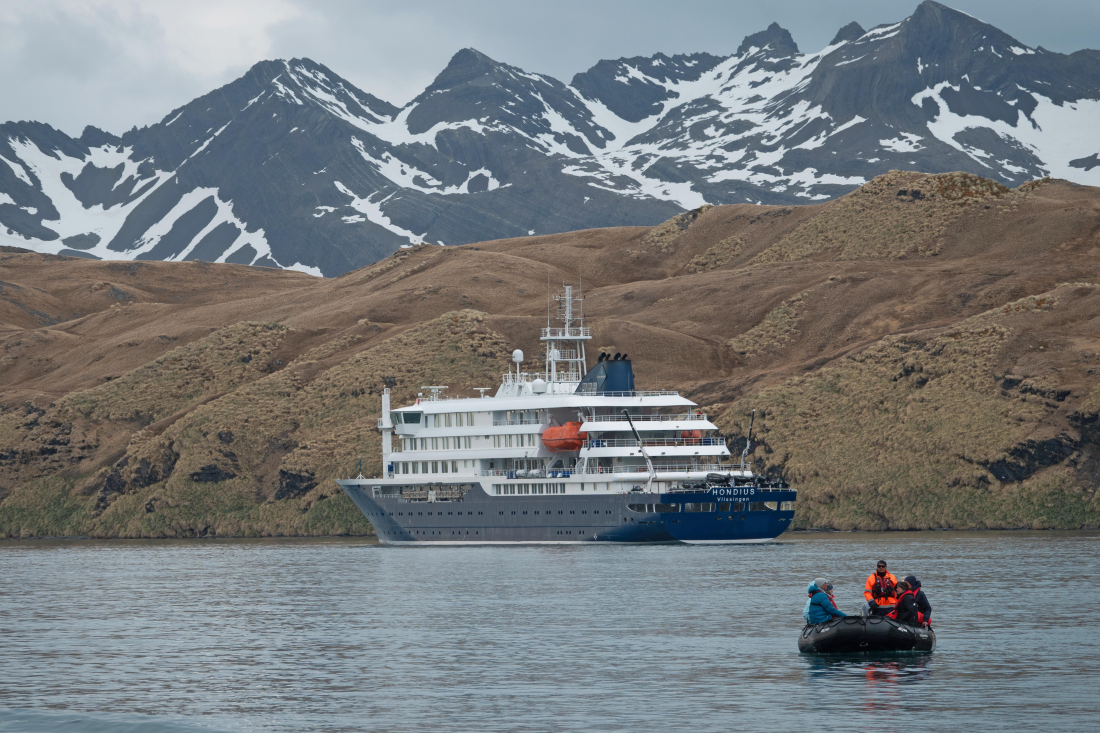| Datum: |
06.07.2019 |
| Position: |
79°19'.3 N, 011°37'.9 E |
| Wind: |
NE1 |
| Wetter: |
Sonnig |
| Lufttemperatur: |
+12 |
Über Nacht segelten wir nach Norden, vorbei an Prins Karls Forland und hinauf in den Krossfjord. Zum Glück war das Wasser ruhig und wir konnten uns gut ausruhen, um uns auf unseren ersten richtigen Expeditionstag vorzubereiten.
Während das Frühstück serviert wurde, fuhren wir in den Lilliehöökfjord ein. Die Sonne schien hell auf das ruhige, türkisfarbene Wasser, als wir uns dem Lilliehöökbreen näherten, dem größten Gletscher im Krossfjord mit seiner 11 km breiten, halbkreisförmigen Gletscherfront. Interessanterweise ist er einer der am schnellsten schrumpfenden Gletscher des Archipels. Schätzungsweise 40 % des gesamten Eisvolumens des Gletschers gehen innerhalb eines Jahrhunderts verloren, wobei sich die Tendenz in den letzten Jahren beschleunigt. Trotz dieser dramatischen Entwicklung ist der Lilliehöökbreen sicherlich einer der landschaftlichen Höhepunkte dieser Gegend, und so begaben sich die meisten nach dem Frühstück auf die Außendecks, um dieses Naturwunder zu bewundern und das herrliche Wetter zu genießen, mit dem wir gesegnet waren. Um 9:30 Uhr versammelten wir uns in der Lounge zu den drei obligatorischen Einweisungen, die vor einem Landgang erforderlich sind: AECO Arctic Protocol, Zodiac-Operationen und Sicherheit von Eisbären. Danach begaben wir uns nach unten auf Deck 3, um unsere Gummistiefel und Schwimmwesten in Vorbereitung auf unsere erste Anlandung abzuholen. Gerade als die letzten Gäste ihre Stiefel abholten, wurde bekannt gegeben, dass unser erster Eisbär für diese Reise gesichtet worden war. Wie erwartet, löste dies große Aufregung aus, und alle zogen sich warm an und eilten nach draußen. Der Bär war auf einer kleinen Insel in der Nähe einer kleinen Hütte zu sehen, wo er sich ausruhte. Wir gingen etwas näher heran, wurden dann aber von den Expeditionsmitarbeitern darüber informiert, dass wir unsere Position halten müssten, da die Insel in der Tat ein Vogelschutzgebiet sei und wir einen Mindestabstand von 300 m einhalten müssten, um die strengen Vorschriften einzuhalten. Obwohl wir nur ein paar Pixel in unseren Kameras hatten, war es sehr beeindruckend zu sehen, wie sich diese wunderschöne Kreatur in der Sonne entspannte und sich auf dieser kleinen Insel völlig wohl fühlte. Während des Mittagessens segelten wir in den Kongsfjord, um für unsere Nachmittagsanlandung in Ny Ålesund in Position zu sein. Dieses ehemalige Kohlebergbaudorf ist heute eine wissenschaftliche Gemeinde, die unter der Leitung des Norwegischen Polarinstituts steht und als die nördlichste Siedlung der Welt gilt.
Wir wurden mit dem Zodiac an Land gebracht und hatten Zeit, durch das Museum zu schlendern, den kleinen Souvenirladen zu besuchen und Postkarten an unsere Lieben zu schicken, bevor wir die Möglichkeit hatten, an einer der drei vorgesehenen Wanderungen teilzunehmen.
Diejenigen, die sich die Beine richtig ausstrecken wollten, machten sich mit Ombline und einigen anderen Expeditionsmitarbeitern auf den Weg zu einem weit entfernten Bergrücken hinter der Stadt, von dem aus man einen herrlichen Blick auf den Kongsfjord und einen der vielen Hängegletscher Spitzbergens hatte.
Es gab auch zwei kürzere Wanderungen in niedrigerem Gelände, die sich mehr auf die Fülle von Blumen und Vögeln konzentrierten. Küstenseeschwalben, Weißwangengänse, Eiderenten, Raubmöwen und Papageitaucher gehörten zu den Arten, die gesichtet werden konnten. Diejenigen, die sich mehr zu den größeren Tieren hingezogen fühlten, konnten ihre ersten Spitzbergen-Rentiere und Seehunde auf dieser Reise beobachten. Alle drei Gruppen gingen über den Mast, an dem 1926 ein Zeppelin-Luftschiff verankert war und der sich am Rande der Stadt befindet. Dies war der perfekte Ort für die Historiker des Expeditionsteams, um ein wenig über die Geschichte der arktischen Erforschung und die Versuche, den Nordpol von Spitzbergen aus zu erreichen, zu erzählen.
Zurück an Bord gab Raphael eine kurze Zusammenfassung, in der er die Pläne für morgen erläuterte. Danach war es an der Zeit, unseren Kapitän Alexey Nazarov zu treffen, der uns in der Beobachtungslounge begrüßte und mit einem Glas Sekt auf den Erfolg der restlichen Reise anstieß.
Nach einem weiteren köstlichen Abendessen begeben sich die meisten in die Bar, um die Ereignisse des Tages Revue passieren zu lassen und bei einem Schlummertrunk auf den ersten erfolgreichen Expeditionstag anzustoßen. Gerade als wir darüber nachdachten, Feierabend zu machen und uns ins Bett zu legen, kam die Durchsage, dass in der Ferne Wale gesichtet worden waren. Als wir uns auf die Außendecks begaben, sahen wir, dass das Meer vom riesigen Rücken eines Blauwals, dem größten Tier der Erde, durchbrochen wurde. Wir verbrachten fast eine Stunde in der Gesellschaft von zwei dieser sanften Riesen und sahen ihnen zu, wie sie sich an einem reichhaltigen arktischen Buffet unter den Wellen labten. Gerade als wir sie verlassen wollten, kamen zwei Finnwale in Sicht, der zweitgrößte Bartenwal. Während sie um den Bug des Schiffes herum fraßen, konnten wir ihre schiere Größe und ihre asymmetrische weiße Färbung bewundern, während sie sich auf die Seite drehten, um sich zum Fressen zu stürzen. Schließlich war es an der Zeit, sich von ihnen zu verabschieden und selbst ein wenig zu schlafen, um uns auf einen weiteren ereignisreichen Expeditionstag vorzubereiten.
